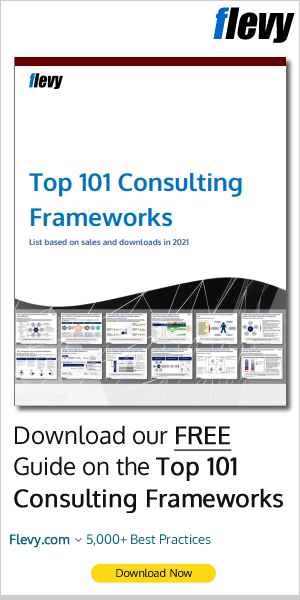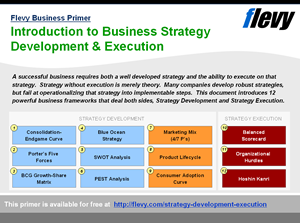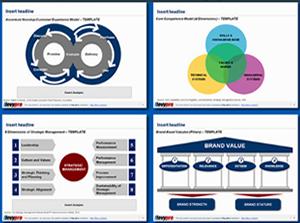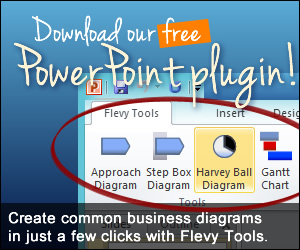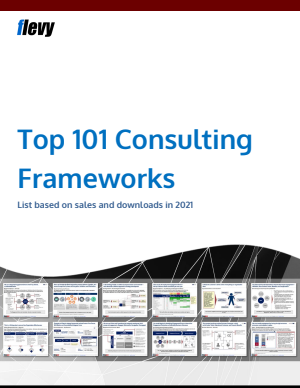Regardless of economic conditions–recession or boom–organizations must continuously sharpen their competitive edge. This can be achieved through Lean Management principles focused on Cost Reduction, specifically targeting the elimination of non-value-added (NVA) activities or waste within value stream processes. Be Lean In the Lean Management philosophy, all activities in an organization are grouped into two categories: […]
Archive | Operations & Supply Chain RSS feed for this section

14 Principles of Lean Toyota Production System (TPS)
Editor’s Note: Charles Intrieri is a consultant with over 25 years of experience in Operational Excellence, Supply Chain & Logistics, and Metrics-driven Management. He has made available a number of reports and tools related to these areas on Flevy, which can be viewed here. * * * * Lean Management (also known as Lean Manufacturing and […]
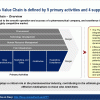
Pharmaceuticals Industry Value Chain: Deep Dive
The Pharma industry is a dynamic and critical sector focused on discovering, developing, and delivering medications that improve global health outcomes. This industry encompasses a wide range of activities, from extensive research and development (R&D) to rigorous clinical trials, manufacturing, marketing, and distribution. Maintaining a robust and efficient value chain is paramount, given the complex […]
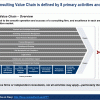
Management Consulting Industry Value Chain: Deep Dive
The Consulting industry is pivotal in guiding organizations through the complexities of modern business landscapes. This sector spans diverse services, including strategy consulting, operations improvement, technology implementation, and human capital management. Consulting firms, ranging from global giants like McKinsey, BCG, Bain, Accenture, Deloitte, and PwC to specialized boutiques, offer expertise that helps organizations enhance efficiency, […]
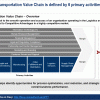
Logistics & Transportation Value Chain: Deep Dive
The Logistics & Transportation industry is the backbone of global trade and commerce, encompassing a vast network of services that facilitate the movement of goods across regions and countries. This sector includes freight transportation, warehousing, distribution, and supply chain management, all of which are critical for ensuring that products reach their destinations efficiently and on […]
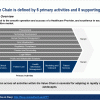
Healthcare Industry Value Chain: Deep Dive
The Healthcare industry is a cornerstone of societal well-being, encompassing a vast array of services from primary care and specialized medical treatments to pharmaceutical manufacturing and health insurance. This sector is experiencing rapid growth driven by aging populations, technological advancements, and increasing healthcare expenditures. According to Deloitte, global healthcare spending is expected to rise at […]
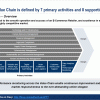
E-Commerce Industry Value Chain: Deep Dive
The E-Commerce industry is reshaping how consumers interact with retailers, offering unparalleled convenience and a wide array of products at their fingertips. This sector includes online marketplaces, direct-to-consumer brands, and omnichannel retailers. According to Gartner, global e-commerce sales are expected to reach $7 trillion by 2025, driven by increased internet penetration, mobile device usage, and […]
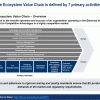
Electric Vehicle (EV) Ecosystem Value Chain: Deep Dive
The Electric Vehicle (EV) ecosystem is revolutionizing the automotive industry, blending sustainability with cutting-edge technology. This sector encompasses the entire lifecycle of EVs, from research and development (R&D) and battery production to manufacturing, charging infrastructure, and customer support. According to McKinsey, the global EV market is projected to grow by 30% annually, driven by governmental […]
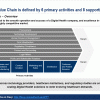
Digital Health Industry Value Chain: Deep Dive
The Digital Health industry is at the forefront of transforming healthcare delivery by integrating cutting-edge technology with traditional healthcare practices. This sector encompasses a wide range of solutions, including telemedicine, mobile health apps, wearable devices, and AI-driven diagnostics. According to McKinsey, the global digital health market is expected to reach $500 billion by 2025, driven […]
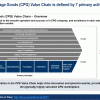
Consumer Packaged Goods (CPG) Industry Value Chain: Deep Dive
The Consumer Packaged Goods (CPG) industry is a dynamic and competitive sector, integral to daily consumer life. It spans various products including food and beverages, personal care, household products, and more. According to McKinsey, the global CPG market is projected to grow by 5% annually, driven by rising consumer spending and urbanization. This growth is […]
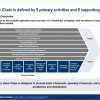
Chemicals Industry Value Chain: Deep Dive
The Chemicals industry is a cornerstone of the global economy, integral to numerous sectors from agriculture and pharmaceuticals to manufacturing and construction. This industry encompasses the production of a wide array of chemical products, including basic chemicals, specialty chemicals, and agricultural chemicals. According to McKinsey, the global chemicals market is expected to reach $5.3 trillion […]
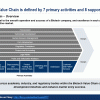
Biotechnology Industry Value Chain: Deep Dive
The Biotechnology industry is a powerhouse of innovation, revolutionizing healthcare, agriculture, and environmental management. Biotech organizations are at the forefront of developing groundbreaking therapies, genetically modified organisms, and sustainable industrial processes. The sector’s significance extends far beyond its economic contributions; it fundamentally transforms lives through personalized medicine, advanced diagnostics, and novel treatments for previously untreatable […]


